|
By Trip Jennings, New Mexico IN Depth
This story was originally published by New Mexico In Depth It’s on. Gov. Michelle Lujan Grisham called New Mexico legislative leaders’ bluff, signing a proclamation Wednesday afternoon to demand state lawmakers return to Santa Fe for a mid-year special legislative session scheduled to begin noon Thursday. Lujan Grisham signed the proclamation during a state capitol press conference in Santa Fe surrounded by a phalanx of public officials that included Albuquerque Mayor Tim Keller, leaders from Farmington, Las Cruces and other communities, and three Pueblo governors. The officials showed up en masse to support the governor in her call for state lawmakers to tackle several public safety measures she says cannot wait until January, when lawmakers are scheduled to regularly return to Santa Fe. Her chances of success are anybody’s guess, especially during an election year when lawmakers would prefer to be home, particularly those running for re-election. When they’re in session, lawmakers cannot solicit campaign contributions, although they can accept them. State House and Senate leaders have told Lujan Grisham that their fellow lawmakers haven’t reached a consensus on her legislative priorities. Governors have the power to call special sessions, but doing so without an agreement forged with leaders during negotiations prior to the session is risky — and rare. Reaction was swift Wednesday afternoon from progressive organizations who have publicly expressed their concern about the governor’s agenda. In an email, Bold Futures, Equality New Mexico, the ACLU of New Mexico, and the New Mexico Coalition to End Homelessness denounced her decision to move ahead while ignoring community members and experts who said the governor’s measures will harm vulnerable populations. Special sessions are usually short and narrow in scope. Fourteen of the 25 special legislative sessions held since 1990 have lasted six days or fewer. And of the seven that lasted 10 days or more, four of them involved lawmakers’ once-a-decade responsibility of redrawing lines for legislative and congressional districts, which generally take much longer than other special sessions. Without an agreement in place, this week’s special session could drag on for days. Or state lawmakers could gavel themselves out of session. A simple majority of lawmakers in each chamber could vote to do that. Or one chamber could work while the other is adjourned, which happened when Gov. Bill Richardson was in office and the Senate adjourned while the House stayed in special session. As was the case with the state Senate that year, the adjourned chamber must come back every three days to gavel itself back into session and then adjourn — unless the other chamber says it is OK to be out for longer than three days. Sundays do not count toward the three days. Here is the governor’s agenda according to the proclamation sent out by her office Wednesday afternoon: (1) amending certain procedures and requirements relating to criminal competency laws (2) amending the definitions of “harm to self” and “harm to others” in the Mental Health and Developmental Disabilities Code and the Assisted Outpatient Treatment Act (3) requiring local law enforcement agencies to submit reports on crime incidents, ballistics information, and other relevant information to the Department of Public Safety on a monthly basis (4) enacting the Unsafe Use of Public Highways and Medians Act to ensure safe use of medians and roadways by pedestrians (5) increasing the penalties for felons and serious violent felons found in possession of a firearm (6) amending the Racketeering Act to add various predicate offenses, expand the definition of “enterprise,” and add various crimes relating to racketeering activity (7) increasing the basic sentence for crimes involving the possession or trafficking of fentanyl (8) appropriating funds to Federal Emergency Management Agency (FEMA) Public Assistance eligible applicants that have been approved for FEMA public assistance funding for projects to replace or repair public infrastructure damaged by fire, flooding, or debris flows that were addressed as part of Major Disaster Declaration DR-4795-NM (9) and appropriating funds for the expenses of the Fifty-Sixth Legislature, First Special Session, 2024.
0 Comments
OFFICE OF THE STATE ENGINEER, INTERSTATE STREAM COMMISSION, BUREAU OF RECLAMATION AND USACE-ALBUQUERQUE DISTRICT PUBLIC AFFAIRS Water Managers continue to respond to sediment plug on Rio Chama: State and Federal partners coordinating to ensure safety and access to water
SANTA FE, N.M. –The Office of the State Engineer and the Interstate Stream Commission, along with the U.S. Army Corps of Engineers (USACE) and the Bureau of Reclamation, continue to work closely together to manage Rio Grande water operations and establish a channel for the river after a sediment plug formed in the Rio Chama following an intense rainfall on June 20. USACE is conducting flood control operations by managing releases from Abiquiu Reservoir within their authorities to minimize effects. To ensure that water rights holders receive the available water and to maintain compliance with the Rio Grande Compact, the OSE/ISC has provided Reclamation with state funding to mobilize crews and specialized equipment to clear a channel through the sediment plug, which was approximately 100-feet wide, 4 to 5 feet deep, and over a mile long. Until channel capacity in the Rio Chama can be restored to safely release higher flows from Abiquiu Reservoir, flows on the Rio Chama will be restricted and San Juan-Chama Project water may not be released from Abiquiu Reservoir. This is resulting in lower flows through the Middle Rio Grande. The state and federal agencies will continue to monitor and respond to the situation and work throughout the Rio Grande Basin to ensure that New Mexicans remain safe and have access to their designated water allocations. --- The Office of the State Engineer is charged with administering the state’s water resources. The State Engineer has power over the supervision, measurement, appropriation, and distribution of all surface and groundwater in New Mexico, including streams and rivers that cross state boundaries. The State Engineer is also Secretary of the Interstate Stream Commission. The nine-member Interstate Stream Commission is charged with separate duties including protecting New Mexico’s right to water under eight interstate stream compacts, ensuring the state complies with each of those compacts as well as investigating, conserving and protecting the waters of the State, in addition to water planning. https://www.ose.state.nm.us A Plebe among greats By Zach Hively If you ever want to feel like the cream that has risen to the top of society, while simultaneously reaching the profound realization that you have wasted your life’s potential up to this moment, then I can only recommend going to the opera. It is not the opera’s fault that you feel like an underachieving potato in a sportscoat, if you feel that way at all, which you will. The opera is simply doing what the opera does best. What does it do best, exactly? I have no idea. I don’t speak enough Italian or Operatic or whatever language they’re singing up there. But the opera is clearly doing something best. Their bestness is in the air of the entire event, and so prevalent that it seemed only natural for me to spend $16 of someone else’s money on a little glass of bubbly. Maybe not all operas come across so superlatively. There could feasibly be a well-intentioned nonprofit out there staging “Der Ring des Nibelungenenginengnen” with an elementary-school orchestra, because that’s what they wrote the grant for. The odds of an entire grade-school symphony being superlative is slim, seeing as so few fifth graders have twenty-plus years of professional experience. I feel confident in suggesting they could not charge more than $8 for champagne. What I do know about the opera is what I have experienced at the Santa Fe Opera, renowned for its open-air operatorium, world-class productions, and tailgating in the parking lot. I have only the most glowing things to say about this organization, in case they are ever hiring for experienced operagoing copywriters. This season, a friend took me to see a production of “Don Giovanni,” composed by Mozart (yes, that Mozart, the one from the movie “Amadeus”) to a libretto by Da Ponte (yes, THAT Da Ponte, the paint magnate). SPOILER ALERT: Don Giovanni is Italian or Operatic or whatever for Don Juan, which translates into English roughly as “Don Juan,” aka a person (often a man) who probably thinks he is better with the ladies (often but not always women) than he really is. I’m serious. Let’s do the math. Donny G’s age is indeterminate, but he is coded as a young-ish nobleman. So we shall arbitrarily decide that he is a middle-aged 31, the same age Mozart was when he composed the opera. (Feeling good about your own life’s accomplishments yet?) We shall also say, without textual evidence, that he has been intimately active since the age of 16, which was probably actually middle-aged in these ancient times. Thanks to the unobtrusive subtitle screens provided to each operagoer, I know that Don Gio brags of bedding 2,065 women (so far!), with a complete roster to prove he is not at all obsessive. Assuming a steady rate of sleepless hay-hitting, without even allowing for a decreased initial success rate as he adjusted to the big leagues, ol’ Don G.V.’s cadence of conquest comes out to greater than one partner each three nights. For fifteen consecutive years. Now, if we as good mathematicians control for him being a man bragging to other men on stage, we can adjust this result by at least a factor of ten. This brings the estimated tally to one partner each month—a more likely figure, considering the Black Death wiped out a third of Europe’s population, including women, some centuries before. Whichever figure you believe, this fictional hero is still getting it on more than YOU are. Probably because he never wasted a single day of his life pounding Oreos. But if Don G himself is not to be believed, then neither are the sets. These meisterwerks of stagecrafting genius will have you questioning even more of your life choices. Like, sure, you are sitting in the audience of a world-class opera production, three or four free (to you) doses of Gruet effervescing in your veins; but, should you have paid more attention in that class where the teacher told you you’d be hanging drywall the rest of your life if you didn’t shape up? Because look what you can do with drywall. Fortunately, you are spared from your rumination by the entrance of the opera singers, who seem like normal everyday people at a Renaissance fair until they open their mouths.
This is when you realize what a commoner you are, no matter how glitzy your getup, no matter how pricy your ticket that someone else gave you. You know that you have achieved nothing as beautiful as these performers’ voices, and that nothing but an intense amount of training and dedication could ever bring you to such fulfillment of your potential. And who has time for training and dedication? My track record says, “Not me!” But even though I’m already older than Mozart was when he died, the opera has inspired me to believe, beyond all plausibility, that it really is never too late to pursue one’s dreams. So here I go. Really. As soon as my bubbly wears off. Discover the Legacy of Oppenheimer at the Second Annual Oppenheimer Festival Aug. 10-31 in Los Alamos. Image Courtesy SALA
Courtesy of the Los Alamos Reporter The Second Annual Oppenheimer Festival, proudly sponsored by TechSource, returns to Los Alamos from Aug. 10 to Aug. 31. This year’s festival invites history enthusiasts, film buffs, and curious minds to explore the rich legacy of J. Robert Oppenheimer and the Manhattan Project, right where the story began. Explore where the story began and dive deep into the world of J. Robert Oppenheimer, the brilliant physicist behind the development of the atomic bomb. This year’s festival offers an immersive experience through a captivating blend of films, lectures, interactive events, and historic tours. Walk the same paths as history’s great minds, visiting iconic sites featured in Christopher Nolan’s Oscar-winning film, “Oppenheimer,” and uncover the stories that changed the world. Festival Highlights at SALA Event Center ● Premieres and Films: ○ Witness the premieres of groundbreaking films such as Christopher Nolan’s “Oppenheimer” and Larry Sheffield’s new documentary, “The Atomic Rocketeer.” ● Classic Films: ○ Experience historic films including “The Beginning or the End,” “Fat Man and Little Boy,” “Day One,” “Dr. Strangelove,” and “Destination Moon.” ● Documentaries and Lectures: ○ Engage with experts like Cynthia Katayanagi, Nancy Bartlit, Alan Carr, and Nicholas Lewis as they present diverse and thought-provoking perspectives on the Manhattan Project and its enduring impact. ● Exclusive Events: ○ Enjoy special lunch and dinner sessions with award-winning producer Larry Sheffield, featuring intimate Q&A sessions that provide a deep dive into his latest work. Discover Los Alamos: Explore the charm and history of Los Alamos through guided tours of key historical sites, including the Bradbury Science Museum, the Manhattan Project National Historical Park, and the Los Alamos History Museum. Unearth local gems such as Bathtub Row Brewing Co-op, Encanto Bistro, Mesa Top Games & Toys, and more, experiencing firsthand why Oppenheimer said, “My two great loves are physics and New Mexico. It is a pity they can’t be combined.” Engage and Win: Collect points with the Festival Explorer Card by participating in events and activities. The more you engage, the more points you earn, leading to fantastic rewards. This is your chance to be part of an extraordinary historical celebration and win exciting prizes. Join Us: Tickets are now available to members, granting exclusive early access to all events. Public ticket sales begin on August 1. Don’t miss this unparalleled opportunity to explore the secrets of the atomic age and the historic town of Los Alamos. For more details, event schedules, and to purchase tickets, visit our Oppenheimer Festival Website. You can call me Yogi By Zach Hively My latest lifelong passion involves fulfillment of my true nature’s potential. Also, science! You see, the gravitational waves that Einstein proposed back inna day explain so much about my ability to do yoga. Now when I say “my ability to do yoga,” I am not trying to make you feel bad about your own inabilities. My yoga teacher says that we yogis are not to judge our stupid inflexible bodies. We are all built differently, she says, which is the absolute nicest way anyone has ever put “neener neener, you’ll never be like me.” You see, some people’s abilities are as invisible as gravitational waves. But the invisibility is not the feature of gravitational waves that explains my yogic accomplishments. Rather, these waves collaborate with my body to render majestically complex poses. Bear in mind, I don’t pretend to understand the advanced science behind gravitational waves—I genuinely do understand them. The trick here is to find an image or a metaphor that illustrates the challenging concept of gravitational waves to other adults. This tactic is what we in the journalism biz refer to as “using our advanced training, for once,” or “I told you an English degree wasn’t completely worthless, Pops.”
You, dear reader, will be aided by an evocative image, like this: The way a gravitational wave works is, it pulls objects to the earth quicker than a pantser can expose the fruits of one’s loom. Before this discovery, gravity was a mere theory, untested and unobservable, like evolution and bipartisanship. Now that scientists have detected gravitational waves for realsies, though, I have science to verify my triumphs on the yoga mat. Like many normal people, I assumed for years that yoga was not for me. I should never have listened to myself. Yoga is a powerful spiritual activity, traditionally harmonizing the physical body with the ethereal reality of failure. But not for me. For me, on Day One, there was only mastery. To be fair, my excellent teacher deserves her share of the credit. She explained, in a soothing voice, that this is a yin yoga class, where we work with gravity to create sensation in the body. So I, as a great understander of gravitational waves, was already starting light years ahead of everyone else. As part of yin yoga, she continued, we hold each pose for three to five minutes. Too easy, drill sergeant. I squirmed through many years of my sisters’ middle school band concerts. After those, I’m not afraid of three to five minutes of anything. The teacher first reclined us into a simple pose—let’s just call it Regurgitated Butterfly—and it all went to plan as I surrendered my groin to gravity. The real secret of gravity is that it never lets up. Its wavelengths expand or contract when there are cosmic shifts in the density of matter, like when two black holes merge, or when Associate Justice Antonin Scalia passed away. But gravity. never. stops. pulling. on. your. groin. As a man, I have learned to keep my pain to myself. So I applied the same principle to my non-pain. I strove to breathe through it, like the teacher suggested. The teacher must have recognized my significant abilities, because she heaped praise on me before everyone else. She was all, I’m going to help you ease your knees apart into the pose, alright? And I was all, I can’t acknowledge you because I’m focused on breathing like a yoga master. And she was all, Just go as far as you are comfortable, and I was all, Okay, and that’s when she talked about us each being built differently. When the teacher moved the class into the next pretzel-pose, she once again came over to me and was like, Normally we save Corpse Pose until the end, but why don’t you go ahead and give it a try. I was the first to the finish line! And Corpse Pose is truly relaxing. It reflects a person who died peacefully, even tranquilly, from kicking ass in yoga class. When the class ended, I must admit I felt somewhat … less gravitied. While everyone else was busy attempting the Caucused Wombat and the Ever-Stubborn Sloth, I grew metaphysically, merging my being with gravity waves and reaching self-actualization. This yoga thing is so worth another week of lifelong practice. My teacher helped me detect my true nature right away. Who knows what else I will learn from her. Perhaps she is a yogic Einstein who understands potentials that I cannot even imagine. If she is reading this now, she should know that her gentle instruction led my chakras and my meridians spiritually far, far beyond Kapotasana pose, so I should never ever have to attempt it. Pretty please? If you liked this piece at all, then you’ll be bound to like it just as much when you read it a second time in my forthcoming book, Call Me Zach Hively Because That Is My Name, coming in September to a white elephant exchange near you. Preorder here
Daria Roithmayr
Images by Erik Roithmayr
Last week we mentioned the shifting sands that felt like walking on a waterbed..
A short video clip showing the liquefying soil the crews battled digging the pilot channel (credit Field Manager Christopher Torres)
The Rio Chama is officially on its way back into its original channel as of Tuesday evening. Workers from the US Department of the Interior Bureau of Reclamation literally broke ground on Tuesday afternoon to let the waters flow into a mile of empty river bed in Medanales. The re-diversion team removed a plug of sand that separated the rediverted river and the original channel to redirect water into the dry river bed. Water that minutes before had been flowing onto local residents’ fields and buildings now rushed into the bed, filling the channel and even making waves as the flow increased.
Several weeks ago, the river had jumped its tracks when area flash floods had deposited an immense amount of silt into an area just north of the La Madera arroyo. The mound of sand plugged the river and has been pushing the river flow onto local residents’ fields ever since.
To guide the river back to its original channel, workers first removed sand at the bottom of the plug, where the original river and new river happened to be close to each other. Workers cheered as water began flowing into the river bed that had been dry for three weeks. To deal with the rest of the plug, the Bureau team used conventional excavators to dig a twenty-foot pilot channel through the sand. At 6:30 on Tuesday evening, the Bureau opened the pilot channel and water began to flow through the plug into the river bed.
The Bureau anticipates that water flowing into the formerly dry bed will carry downstream all the sediment from the plug. Plans are to monitor the pilot channel and the river carefully, and gradually increase the river flow, which is currently at 100 cubic feet per second. As the flow increases, it will carry more sand and sediment from the plug and the pilot channel will widen over time.
Acequias downstream of the plug have been notified that the water will contain much sand and sediment, and mayordomos can decide when to begin using the water. Those upstream will benefit from the increased flows, as flows have been kept low to reduce damage from the river diversion. Torres expects residents’ fields to begin to dry out on their own, depending on weather, soil composition and the gradient of the field. “This is an ‘adaptive management’ process,” explained Torres.
The Bureau of Reclamation encountered an unexpected river roadblock early in the project. What had appeared to be firm sand swallowed a bulldozer, which took much effort to retrieve. The Bureau immediately sent for amphibious equipment that could operate in water and on springy sand. The process was time consuming: the amphibious dozer had to be packed up disassembled from Socorro and reassembled in Medanales. Predictably, the original timeline had to be scrapped. “As Mike Tyson says, everyone has a plan until you get punched in the face. We got punched in the face,” explained Chris Torres, the Field Manager for the Bureau of Reclamation. “We made up a lot of that time,” Torres said, speaking with great pride about his team out of Socorro. “An average of six or seven workers have been working nonstop for the last three weeks, working twelve-hour days even on the Fourth of July. They are so dedicated, I have to remind them to eat lunch, or insist that they knock off for the night.” Torres has had much experience with re-diversions, because the Rio Grande frequently jumps its tracks. As the water flowed with force into the river bed on Tuesday, a nearby resident who came to watch the proceedings jumped for joy and flashed the crew a big thumbs up. By Carol Bondy
Last week via Email and Facebook Readers reported feeling tremors. The tremors were felt over the previous week. On 7/7 a stronger tremor was reported a little after 8PM. The tremors were along 554, on Blue Earth Trail, along 142, 155 and 156. Some of the comments "Yes I’ve felt them all. Someone suggested that they may be sonic booms? Last week I felt two in the middle of the night. They felt like they were coming from underground." Yes! I felt it just after 8pm last night (Sunday). Off 554 on 142. I felt two, up on 156 by plaza blanca. One was 11:08 pm felt a big quick jolt a couple weeks ago here on 155, my closest neighbor felt it too. Yes, we felt all of these off 554 We contacted our resident Geologist, Kirt Kempter. He had not heard of any. USGS did not report any on their website. USGS reported quakes that are 2.5 on the Richter scale. Lesser tremors can be reported and they will track. We also contacted Bureau of Reclamation to see if there was a chance these could be related to the work being done in the riverbed. The answer was no. So if you felt a quake you or feel one in the future you might want to report it. Click on "Felt Something Not Shown" On USGS Thanks John Yewell for sharing that link. By BD Bondy This Summer, one of the things we did was drive to Seattle and pick up our grandson to go to Wyoming. Our grandson, Milo, likes wildlife. He loves nature, and he’s really good with it. He studies all kinds of animals; salamanders, fish, birds. He likes looking for them too. And just so you know, he’s 20, so, not a little kid. We took him to the Green River Formation in Kemmerer, Wyoming to go fossil fish collecting with some dear friends, Jim & Nada. Last year we met them there, as they also like fossils, and while there, the fossil fish capitol of the world, we stopped in a fossil shop that offered night digs. That business is called In Stone Fossils, hence the name of this article. So for a year, we have been anticipating going on this night dig with In Stone Fossils, co-owned by Dean Sherman and his wife Stacey, and Garey and Lisa Lacey. I was very excited to be able to have this opportunity to do a night dig. To begin, our first dig day was Monday and the four of us, Milo and I, and Nada & Jim, went to a ‘regular’ public type quarry called Fossil Safari. I highly recommend doing a dig like this if it’s your first time out. These quarries are open all day, provide the rock, tools, and instruction. We’ve been to the quarry next door called American Fossils, which I highly recommend. Fossil Safari was great, very much like American, they provide everything you need, including saws to trim your fossils at the end of the day. You find plenty of fish, and sometimes a leaf or a bug maybe. Some folks have found Stingrays. Next day was Tuesday and we went to In Stone Fossils for a private day dig. It was very different. They provide lots of tools, and a couple guys to help, Ayden and Graison. Plus, we dig a part of the actual quarry. The fish fossils were better quality and more varied. This was still an upper level of the ancient lake, but it was a lot of fun digging out big slabs of rock and splitting them down looking for things. We found lots of fish, some palm, leaves, and maybe some plant like material. While here, the extremely enthusiastic owner Dean showed Milo and I a couple of other layers. He took us to the Mini Fish layer which is made up of very thin layers that come apart easily, literally just by pressing on it. They come apart like leaves of a book, very delicate and thin, often with small fish in them. Another layer he showed us was the Gastropod layer. While breaking out some slabs, he almost immediately came up with a large Phareodus fossil. A gorgeous fossil fish about 12” long. Another great day for us. It was so great in fact, we booked another dig just like it for Friday. Wednesday was the night dig, starting at 3pm. I know, not night, but we again met at their shop in town and they had a charcuterie board waiting for us with customized insulated water bottles with our names on them. The shop is beautiful, of course, with great fossils on display. After that we were driven back up to the quarry where we began taking out slabs of rock in what is called The Eighteen Inch Layer. This layer is more at the bottom of the lake formation. The 18” layer is a primo layer where some of the best fossils are found. It is dug at night using spotlights to highlight shadows on the exposed rock surfaces. The light and shadows accentuate the bumps and other features that indicate the presence of fossils beneath. It was a lot of work taking the chisels and working out slabs about 3/4” thick, and pulling them up and putting them aside to look at them later, after dark. We worked till 6pm and then stopped for a lovely dinner provided by In Stone Fossils. During the dinner the sun began to set and that led to some great pics. After that, we went back to work. We found some good fish, but also, we found 4 great fish. There were 4 specimens good enough that warranted professional cleaning, or in their lingo, preparation. One of the fish was a Stingray. Dave, one of the fantastic guides we had, spotted it late in the evening. He was so excited. Apparently, it is rare to find a Stingray in the 18” layer. Around midnight we called it a night and began cleaning up to leave the quarry. The guides took care of everything, which included trimming and boxing up the fish. The Stingray was still in the ground and would require more work to carefully extract it. That happened Friday.
Thursday we slept in a bit and did some birding at the nearby Seedskadee Wildlife Refuge. Friday, we went back to the In Stone Fossils quarry. We dug yet another great layer, called The Sandwich Layer, which is just below the 18” Layer. Again, Dave, Ayden and his brother Graison worked with us, pulling slabs directly out of the ground and splitting them. Some wonderful fish turned up, some bugs, leaves, and a good partial palm frond. Meanwhile, Dean and Garey, along with Dave started working on the Stingray. It took a couple of hours but they got it out in one piece and we took turns getting our pictures taken with it. I want to again thank everyone that works with In Stone Fossils for making this such a fantastic experience. And I want to thank the owners Dean & Stacey, and Garey & Lisa for making us feel so welcome. I look forward to seeing the 4 prepared fish fossils, which will take almost a year before completing. And I’m including contact info for In Stone Fossils, in case you want to do some digs with them. I can’t recommend them enough. Check out their Instagram site as well. https://instonefossils.com 307-723-0969 [email protected] @instonefossils Thank you Jim & Nada for helping write this article. I could not, would not, have been able to do this without you. It was you two that found In Stone Fossils in the first place. 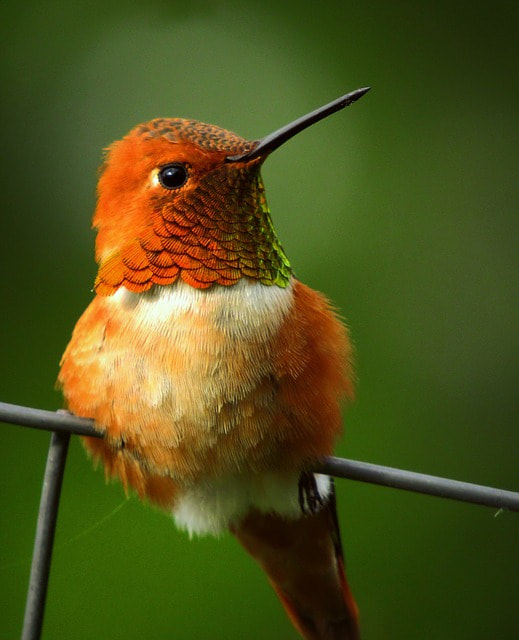 Image by Daniel Roberts from Pixabay Note: As Katy B reported seeing the first Rufous hummingbird of the season we are republishing a feature from 2018
By Sara Wright This morning I watched aghast as Mr. Rufous hit the window and fell to the ground. Rushing out to give him sugar water, I was so relieved to see him recover his wits and fly towards his cottonwood bower on his own. A very close call. Rufous, an iridescent coppery jewel arrived here on June 22 and his mate – just as beautiful in her less dramatic emerald and rust attire, came with him. My other resident hummingbirds (black chin, and broadtail) all seemed to be cooperating as they visited my two feeders. I wondered how Rufous and his wife would fit in so I have been keeping a sharp eye on hummingbird cooperation dynamics. Five weeks have gone by since their arrival, and this couple is staying to raise a family. It is true that this pugnacious little hummingbird can throw a wrench into cooperation but I have been pleasantly surprised to see this male and female sipping nectar with other birds sitting on neighboring perches. Could it be that the broadtail and black chin social dynamic has rubbed off on Mr. and Mrs. Rufous? I have no way of knowing but it does seem that they are more willing to compromise than most others I have known. Some days, of course, Mr. Rufous hovers above the feeders and making sudden aggressive dives scaring the others away with his high pitched squeaks and buzzing - but only for a few moments. Usually he lets the others return to share quite companionably. Mrs. Rufous seems very cooperative and she has taken to visiting the nastursiums, scarlet runner beans, fiery salvia, deep rose and scarlet penstemon and the pot that holds my bee, butterfly, and hummingbird friendly wildflower mixture that Iren gave me last spring. Apparently, the territories that the male and female rufous hummingbirds “defend” are somewhat different. Males hover over the primary food source(s) while the females extend their ranges further afield choosing less dense wildflower meadows. But this year, except for my little pot garden there are few wildflowers beyond the fence where I do not water, so choices, at least here, are limited. And Mrs. Rufous does not hog these flowers. Rufous hummingbirds are small with a short tail with mighty flight skills that allow them to travel 2000 miles from Mexico to as far north as Alaska for breeding in the western states. This migration can take place from as early as May to August in New Mexico, and some stop along the way to raise their families. They follow the wildflower season throughout the rocky mountain area. During their long migrations, they make a clockwise circuit of western North America each year moving up the Pacific Coast in late winter and spring, reaching Washington and British Columbia by May. As early as July they may start south again, traveling down the chain of the Rocky Mountains. The adult male has a slender bill, white breast, a rusty face, flanks and tail with a startlingly beautiful orange-red throat patch or gorget. Some males have some green on back and/or crown. The female has green, white, some iridescent orange and a dark tail with white tips. The female is slightly larger than the male and has longer wings. As many of us know they feed on nectar from flowers using a long extendable tongue or capture insects on the wing. These birds require frequent feeding while active during the day and go into a state of torpor at night to conserve energy. Because of their small size, they are vulnerable to insect-eating birds and animals. Most breeding habitats are open areas, mountainsides and forest edges in western North America and the Pacific Northwest. The female builds a nest in a tree or shrub and raises her brood of two chicks alone. The offspring are ready for flight in about three weeks. Surveys show continuing declines in rufous numbers during recent decades. Because they rely on finding the right conditions in so many different habitats at just the right seasons during the year, this hummingbird is especially vulnerable to the effects of climate change. These iridescent "flower birds," were considered gifts from the gods by Indigenous peoples. In Peru and other South American countries, naturalists have cataloged over three hundred species, and it is believed that not all have been discovered yet. The rain forests of South America were probably where hummingbirds first evolved (co-evolved) with flowers. Water, man. By Zach Hively Recently, nearby, an arroyo carried so much sand to the Chama River that it plugged and diverted the flow. This is the power of water in the desert—and I have no doubt this has been happening, in moments, for as long as there has been a river through this valley. The problem now, of course, is that people live and farm along this river and this arroyo. We humans don’t function on geologic time; we need and expect water to stay where we found it. I understand these people along the Chama are receiving help and support. I hope I understand right. I also hope that we can start to (re)learn how to live in a world that has always shifted under our feet and over our heads … because these changes are accelerating. ANYWAY. Thinking about the river and my own local tributary to it, where I walk most days with the dogs—feeling into it—this poem came out. Surprise: it might change after I post it! I’d be silly to think a river poem could remain unrevised for good.
Don't ask me what this poem means. It is no more impervious than any of us, absorbing, steeping, evaporating as we go. This poem changes when you read it, when each person reads it, gives itself away like a river souvenir, shoes squelching on the walk home. I gawp at this, my little river, maintaining its riverness no matter who steps in it, drinks from it, thinks for one moment they can stack some rocks to pool it against its own definition. Even when it runs dry —it runs. That's all this is: a poem, the way all I am is me, always in motion, especially when committed to some temporary map between floods. Zach’s Substack is free. The free stuff today will remain free tomorrow. Someday, he might offer additional stuff. Zach+, as it were. You can tell Zach that you value his work by pledging a future paid subscription to additional stuff. You won't be charged unless he enables payments, and he’ll give a heads-up beforehand. Pledge your support |
Submit your ideas for local feature articles
Profiles Gardening Recipes Observations Birding Essays Hiking AuthorsYou! Archives
June 2025
Categories
All
|





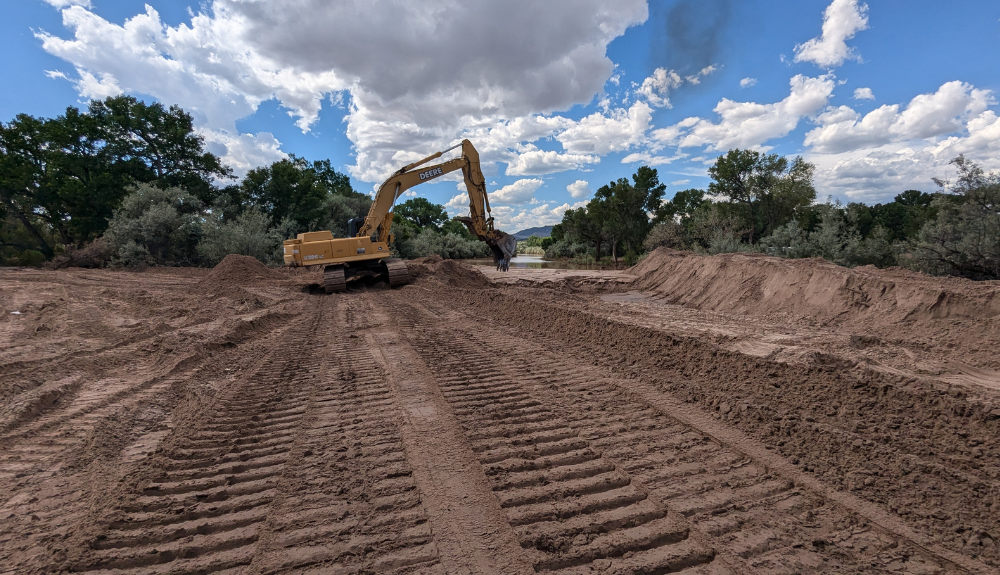
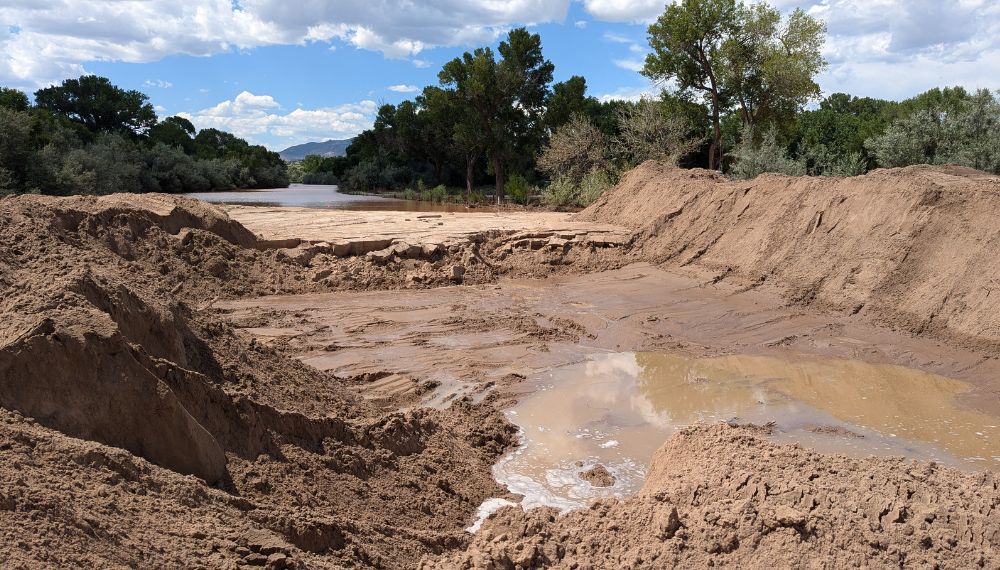


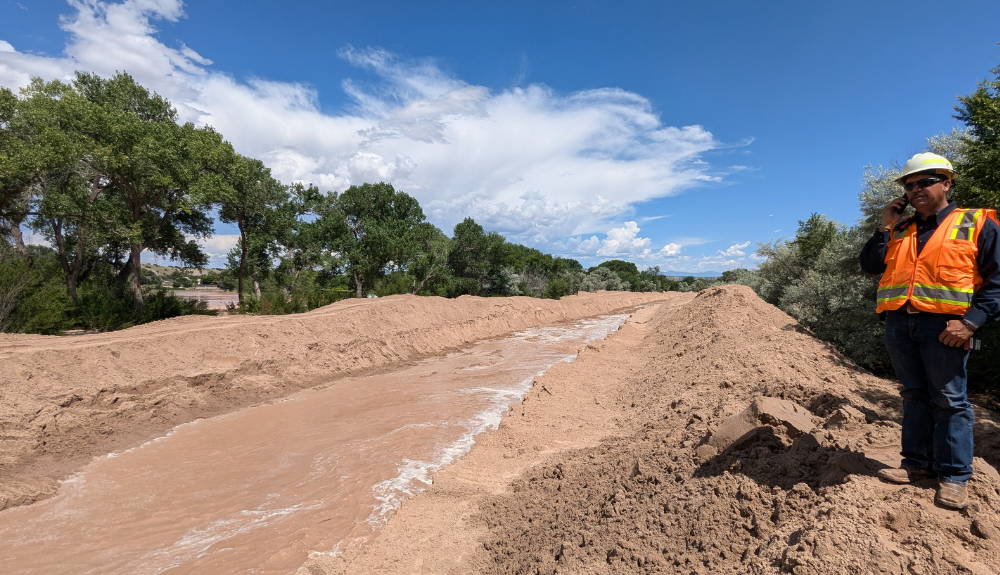
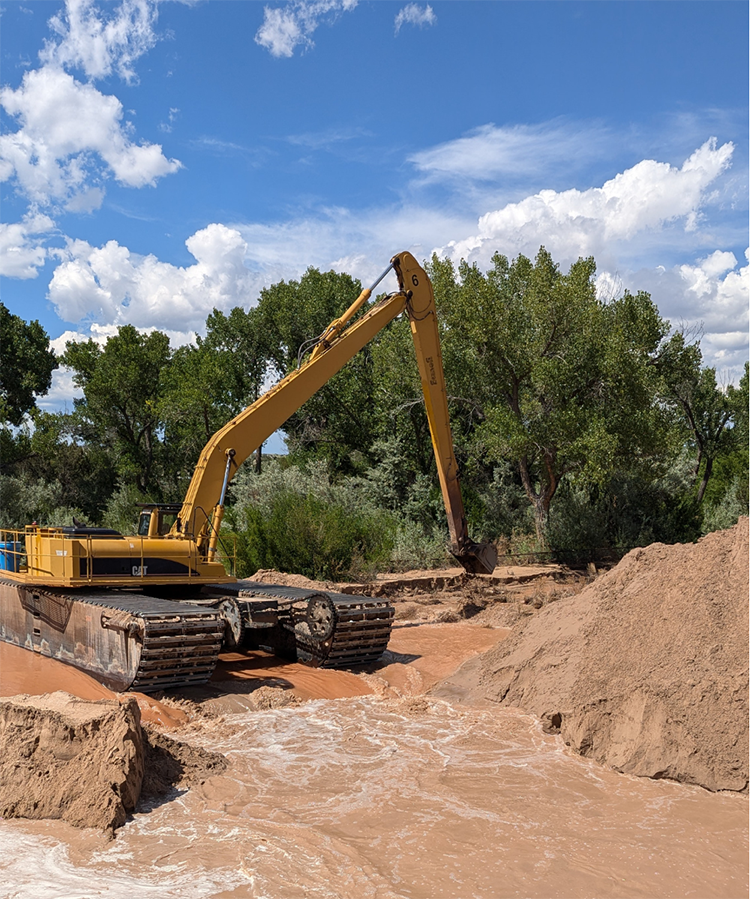

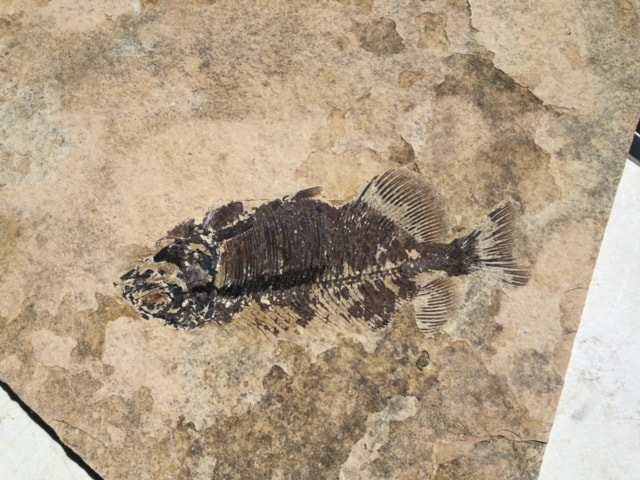


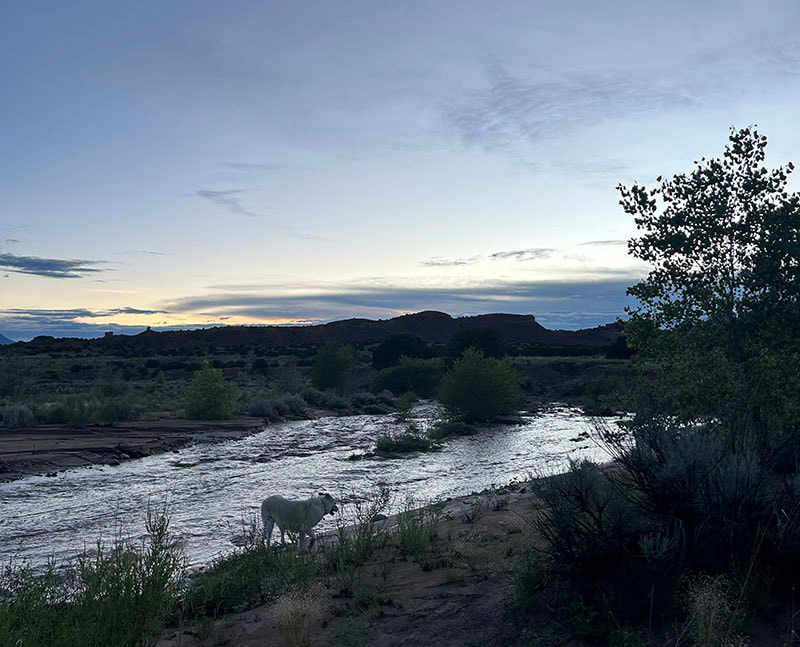
 RSS Feed
RSS Feed